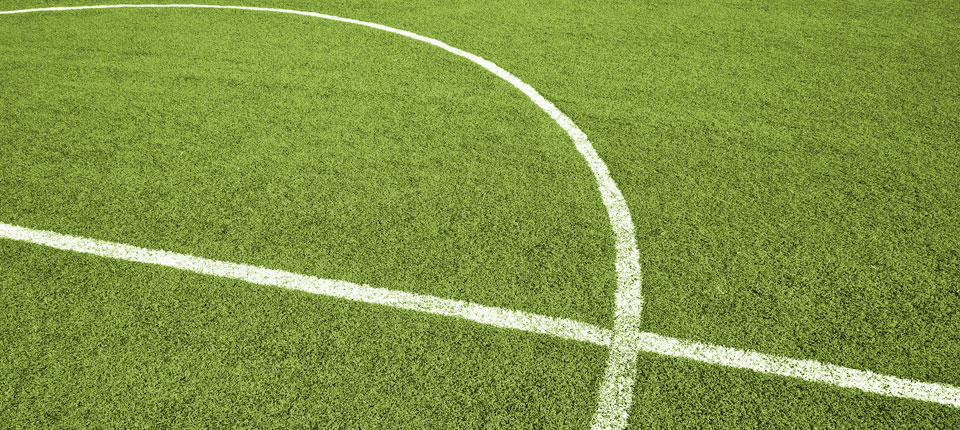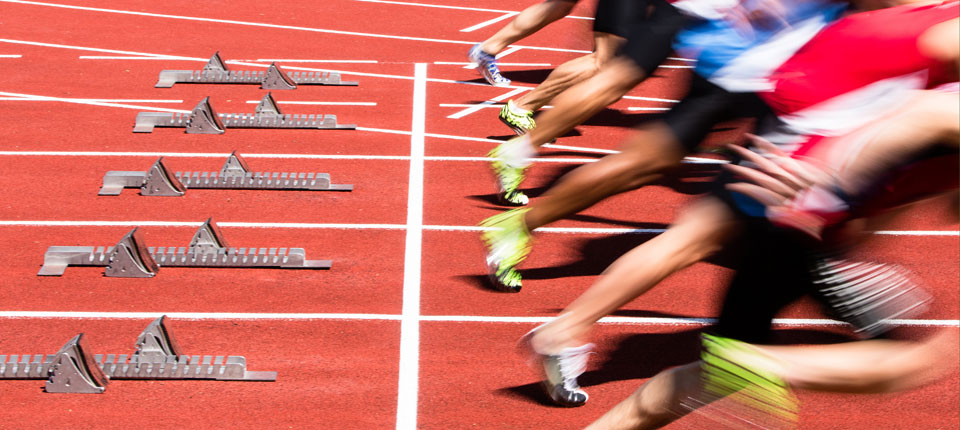Artificial Surfaces for Athletics
Historically, athletics tracks were typically surfaced with shale, stone or cinder. In the modern day tracks are now predominantly rubberised surfaces constructed over a precisely laid tarmacadam foundation.
The first fully synthetic athletics track surface, known by the brand name “Tartan™”, was manufactured in the USA in the late 1960s and there are now a wide range of synthetic track types available.
When considering the development of any athletics facility it is important to take into account the level of competition intended to be staged at the venue.
Athletics facilities are generally used for daily training as well as for staging local or regional level competitions. The staging of athletics competitions at national level (or higher) normally entails more extensive requirements for the sports facility, particularly in respect of the associated infrastructure.
Consideration should be given to the usage of the infield area inside the centre of an athletics track as this can, with careful design, be used to accommodate other sports usage such as football, rugby or hockey.
The four main types of synthetic track surface systems are briefly described below;
Solid Polyurethane
The impermeable ‘solid’ system surface has a relatively hard consistency that gives the fast times preferred for high standard elite level competition. The base layer consists of a polyurethane flood coat impregnated with rubber granules. A final flood layer of polyurethane is then applied with an EPDM rubber surface dressing. This type of system is mainly used at elite level venues rather than general training facilities.
Sandwich System
This provides an elite level surface at a more competitive price than the solid system described above. The base layer consists of a machine laid black rubber granules bound with polyurethane resin. A flood coat of polyurethane is then applied together with an EPDM surface dressing. The sandwich system is impermeable and combines the less expensive black rubber granules used in porous tracks with the full synthetic topping of the more expensive solid polyurethane system.
Porous System (‘Spraytop’)
The majority of athletics tracks constructed in the UK are surfaced with a porous system and it is generally seen as the surface choice for schools, universities and local clubs. The risk of injury is reduced by its softer surface characteristics. The porous system is installed by a two-layer process. Firstly the black rubber granule base layer is machine laid, the granules being bound together with polyurethane resin. The second layer is then applied, consisting of a structural spray coat of coloured EPDM granules and pigmented polyurethane.
Pre-fabricated
Unlike the 3 systems described above which are all laid “in-situ”, prefabricated surfaces are sections of rubber matting manufactured in a controlled factory environment which helps to ensure even thickness and controlled performance characteristics. There are two main types of construction: solid sheets and sheets with a voided backing that improves shock absorption. Pre-fabricated systems are recognised as an elite level surface suitable for international standard events, including the olympic games.
At SSL we’ve found that there isn’t a ‘one size fits all’ solution for athletics as the usage and physical location can influence the durability requirements substantially. As with all of our synthetic surfaces, the SSL team work with you to identify your requirements and provide the right surface solution for what you need.

